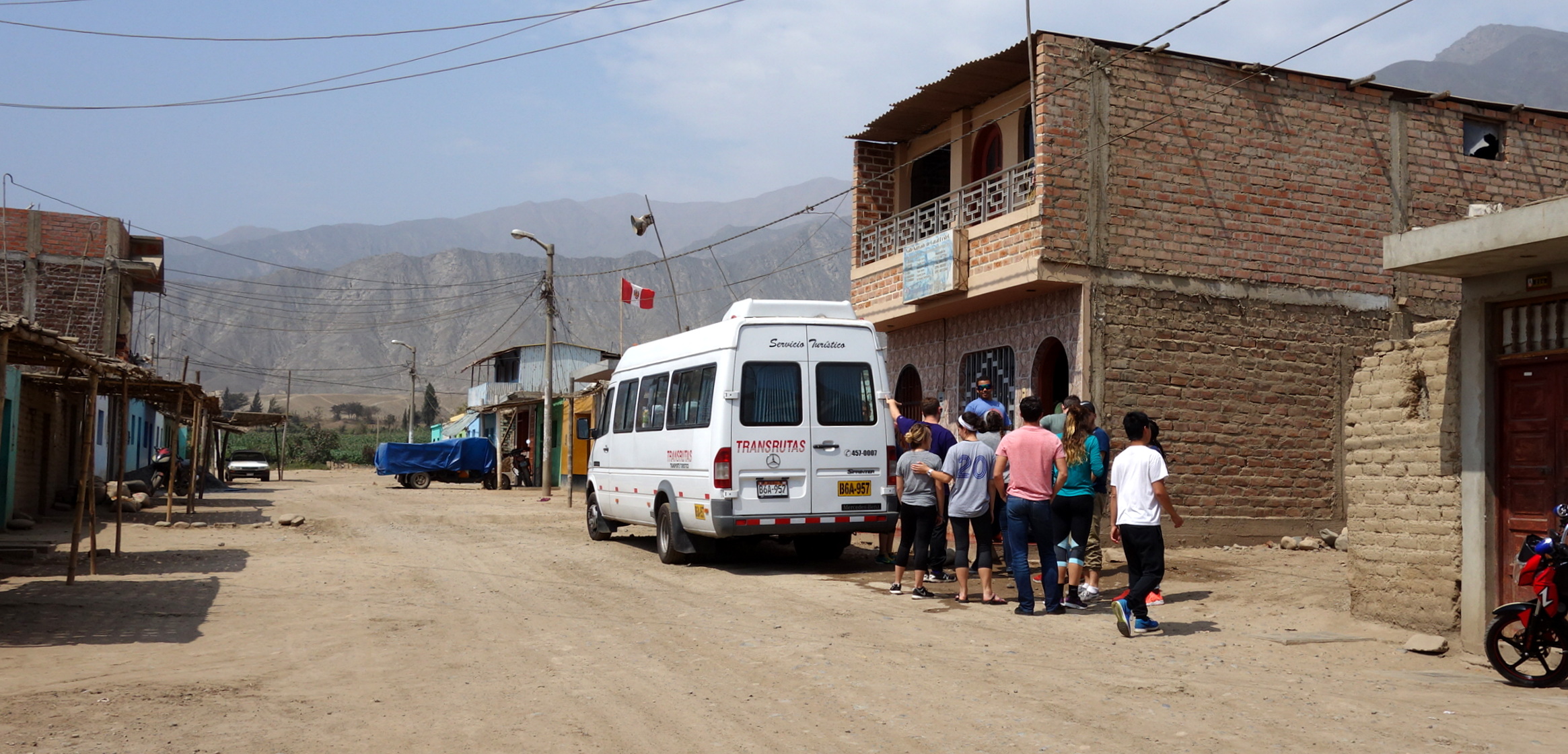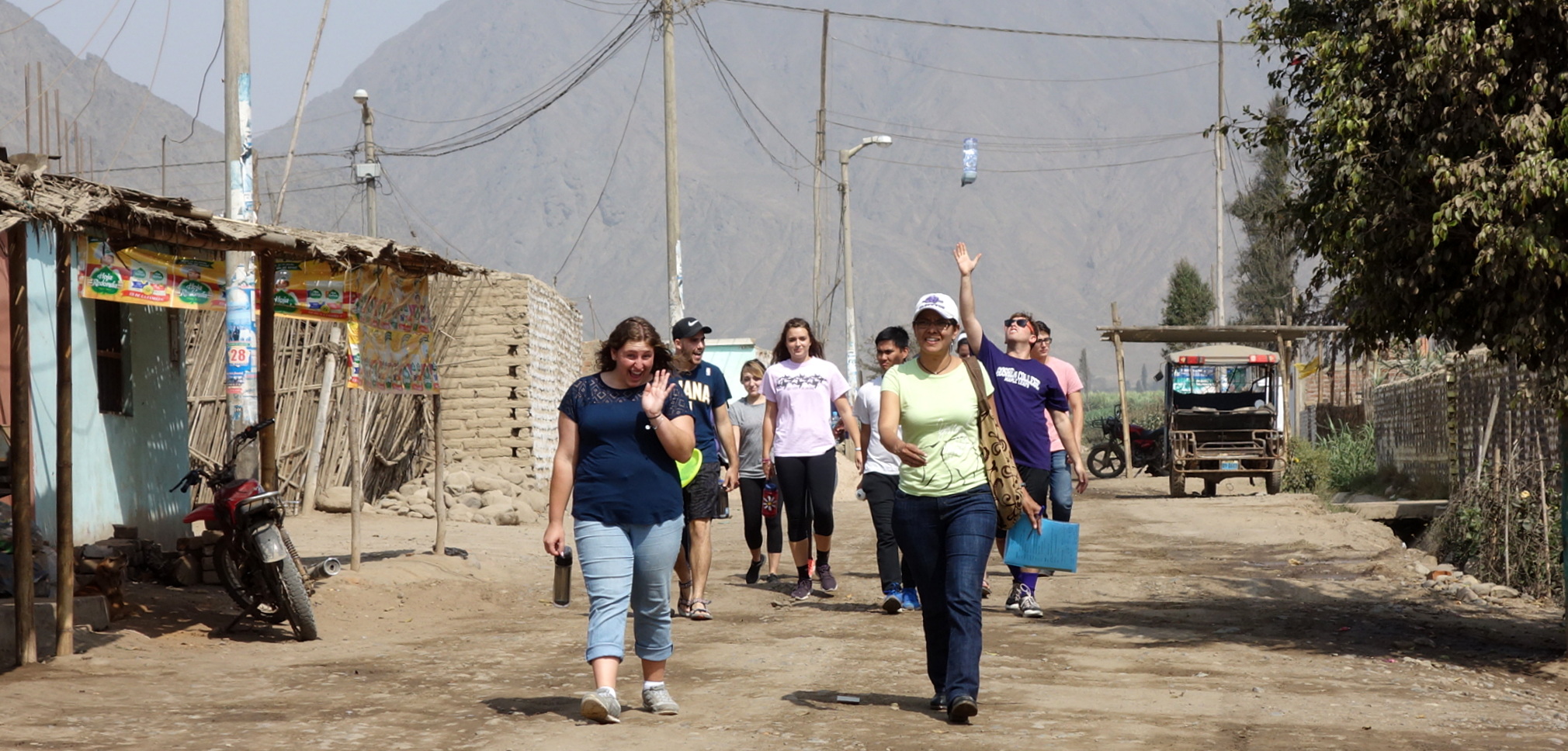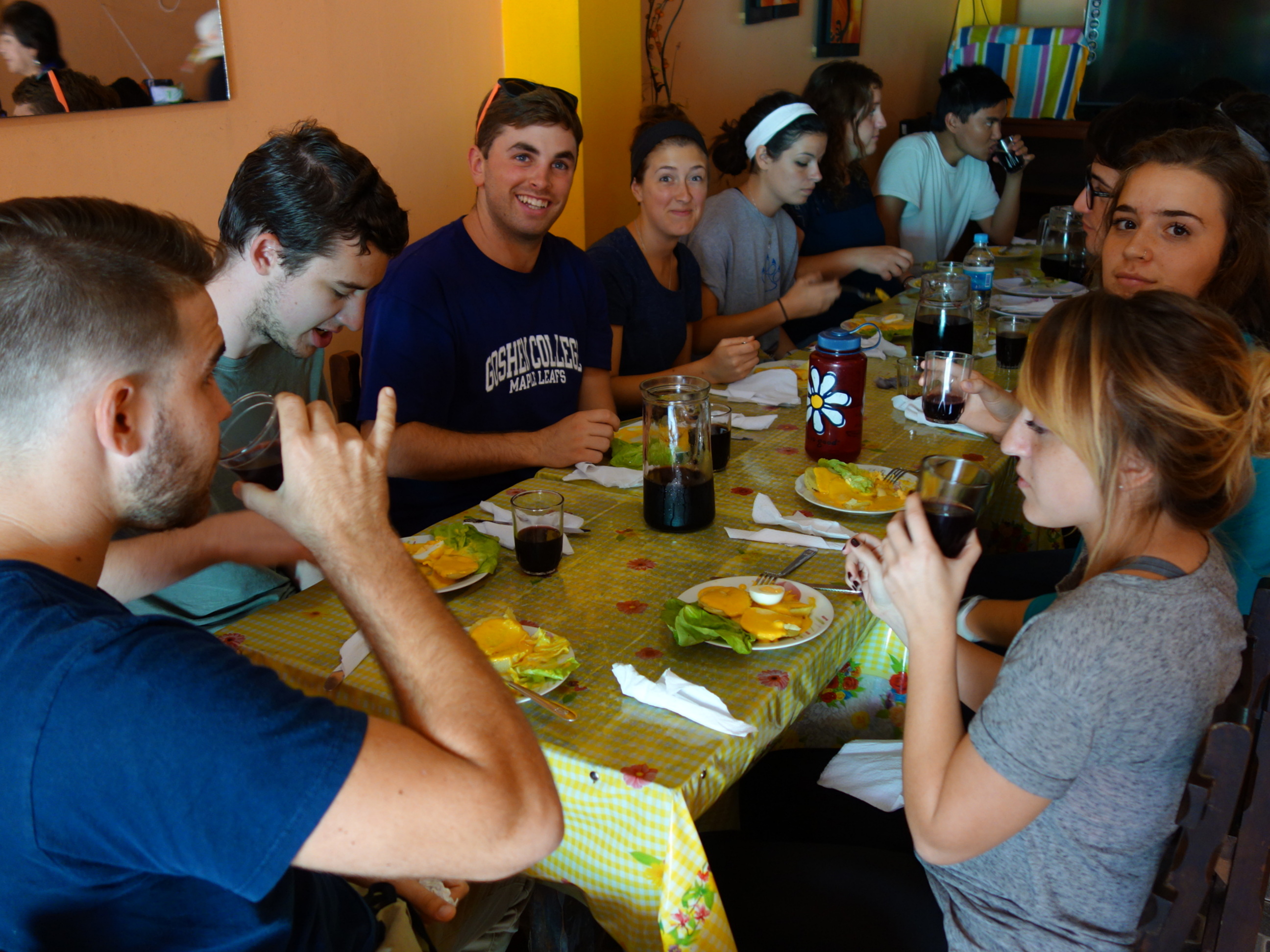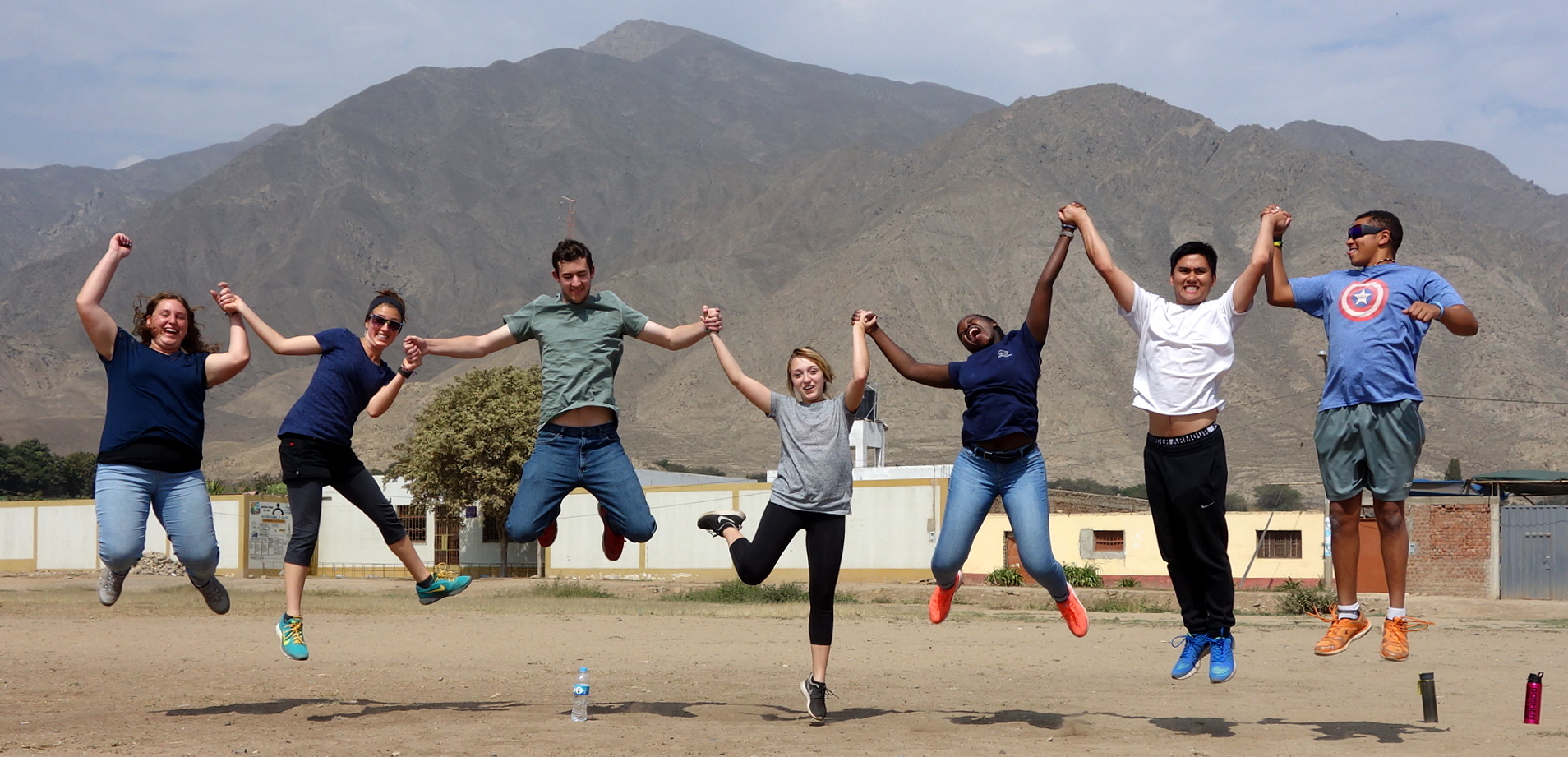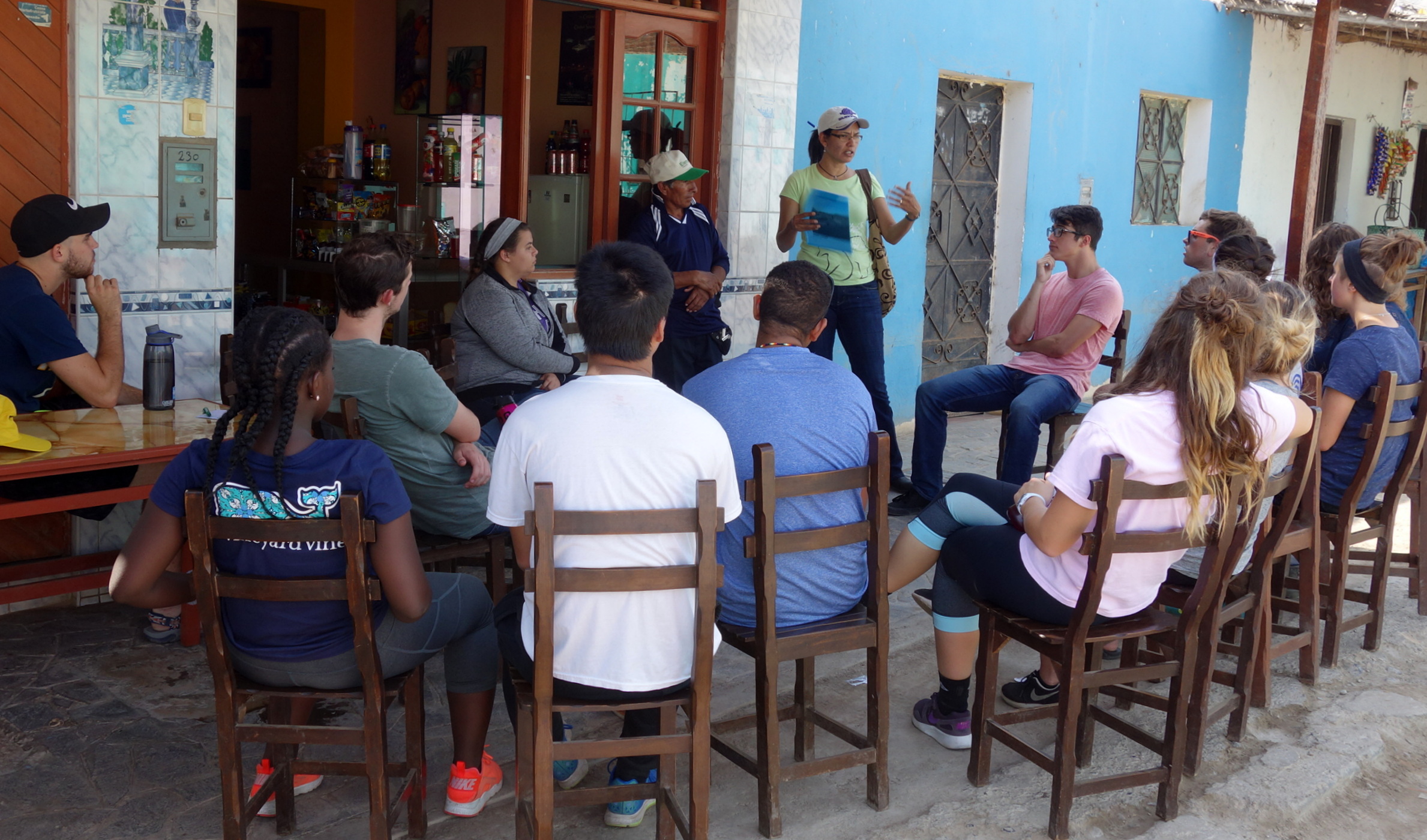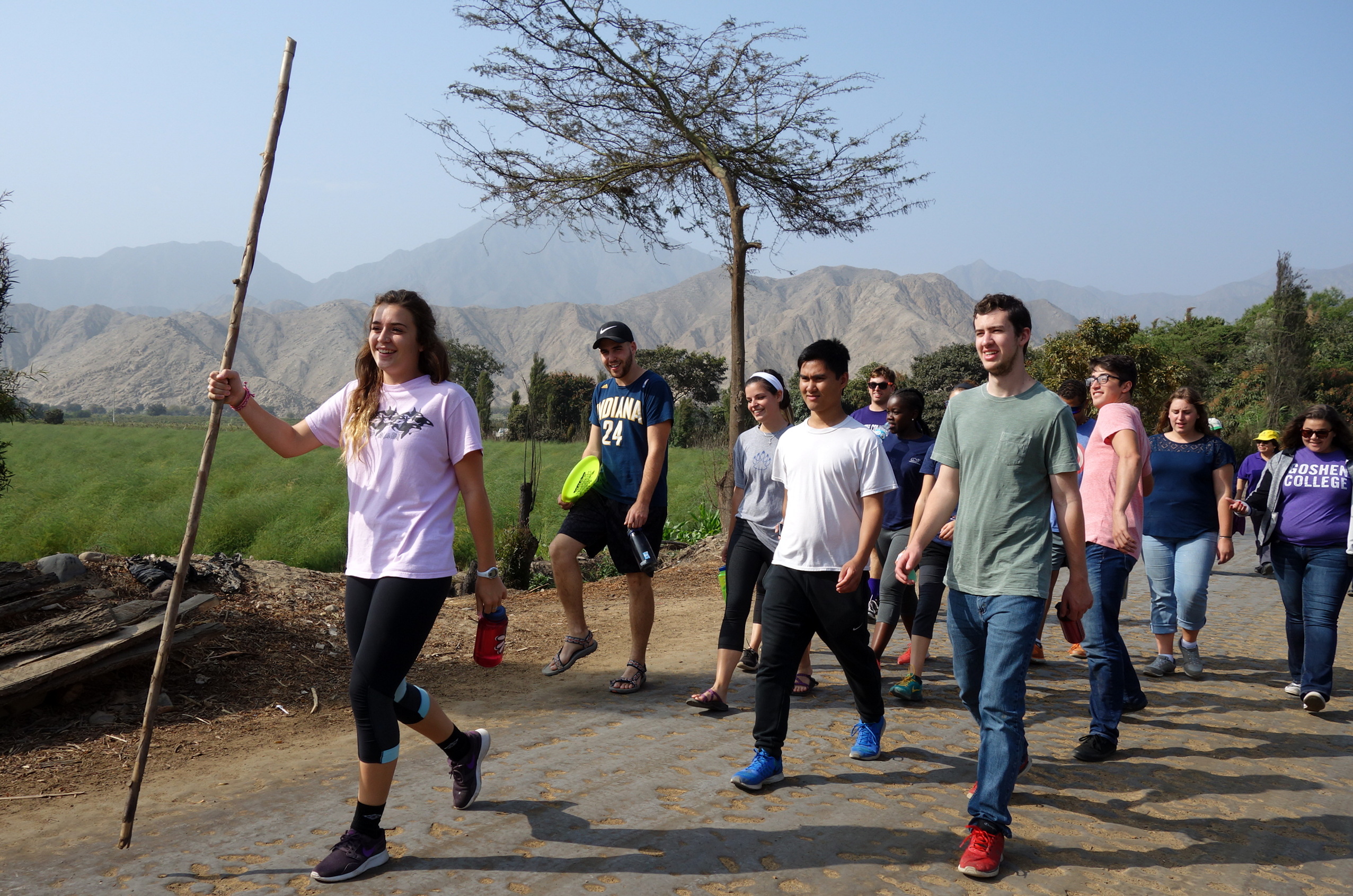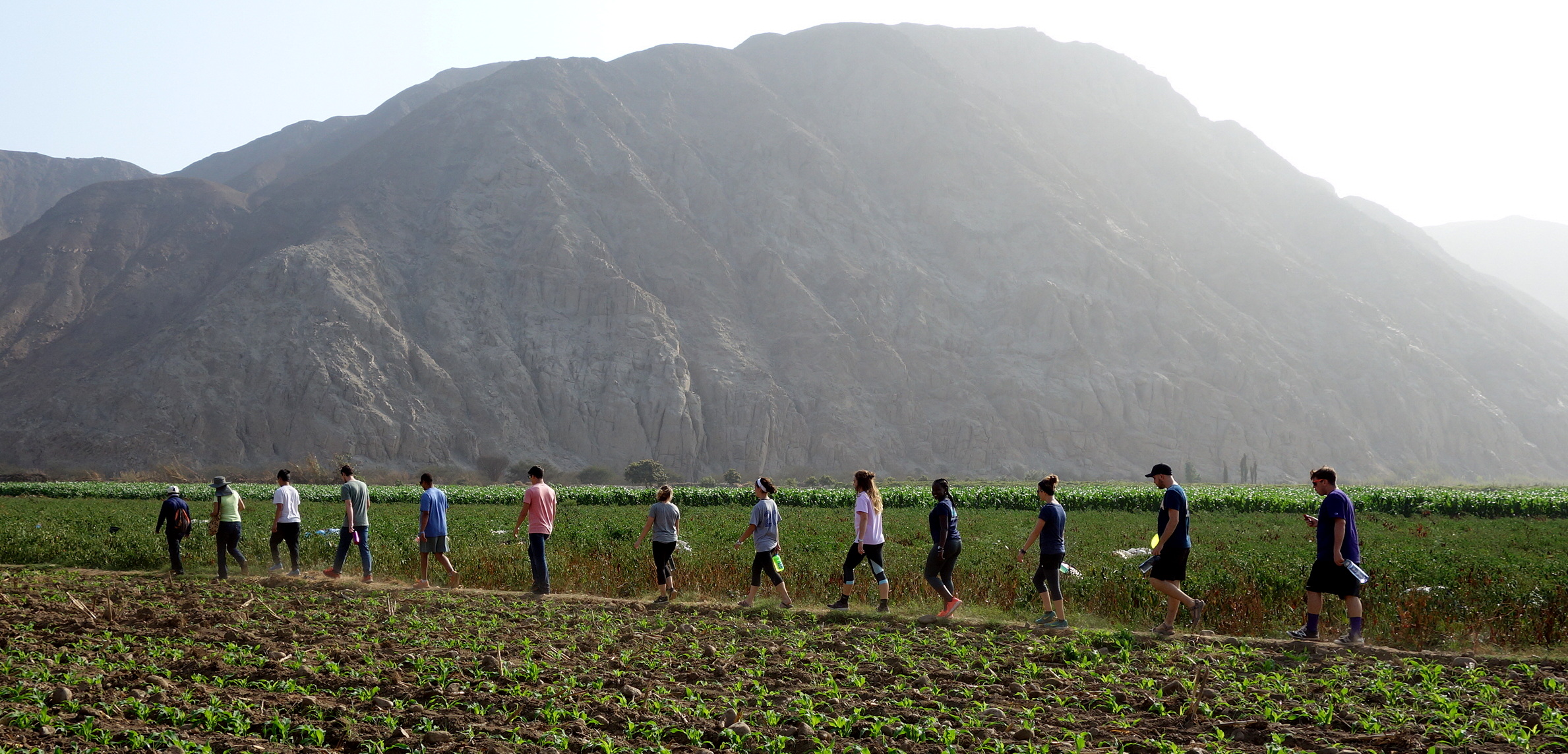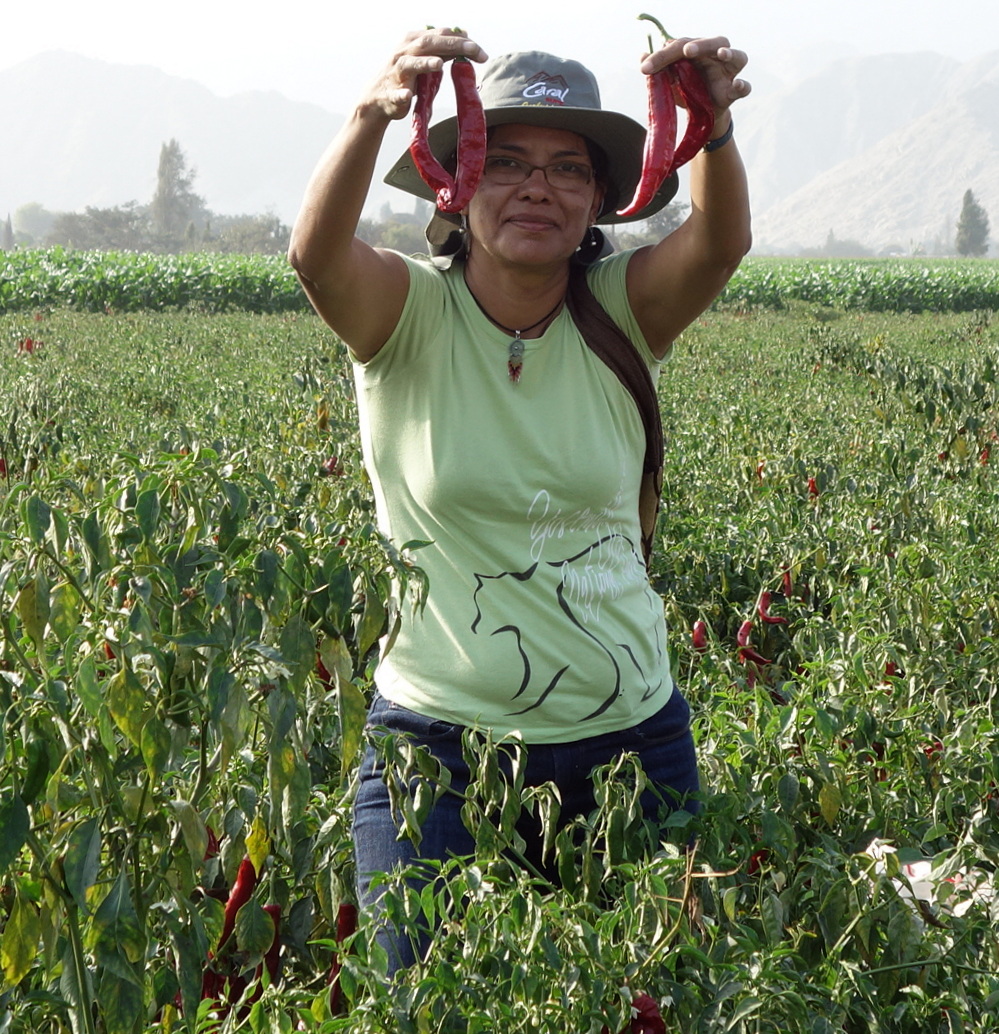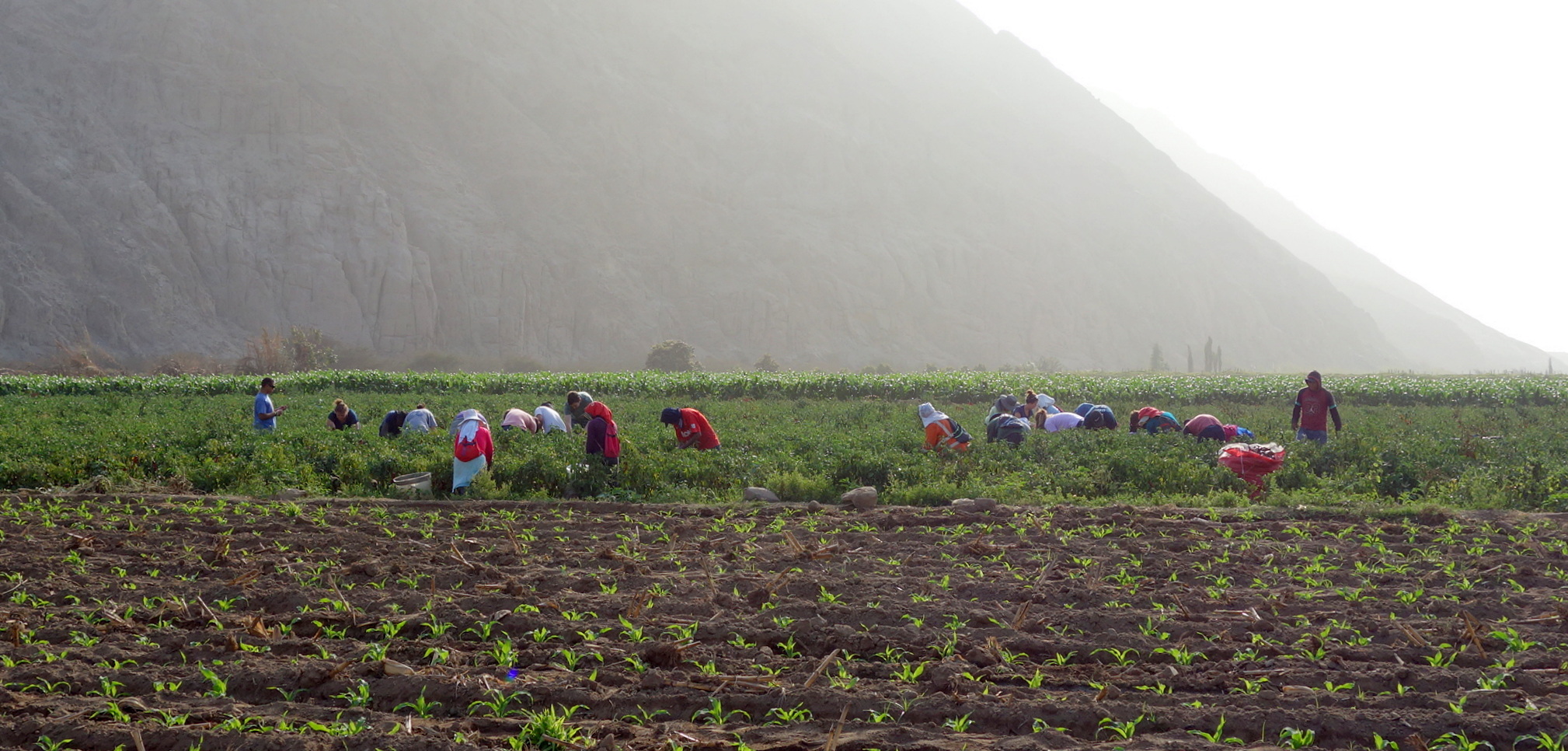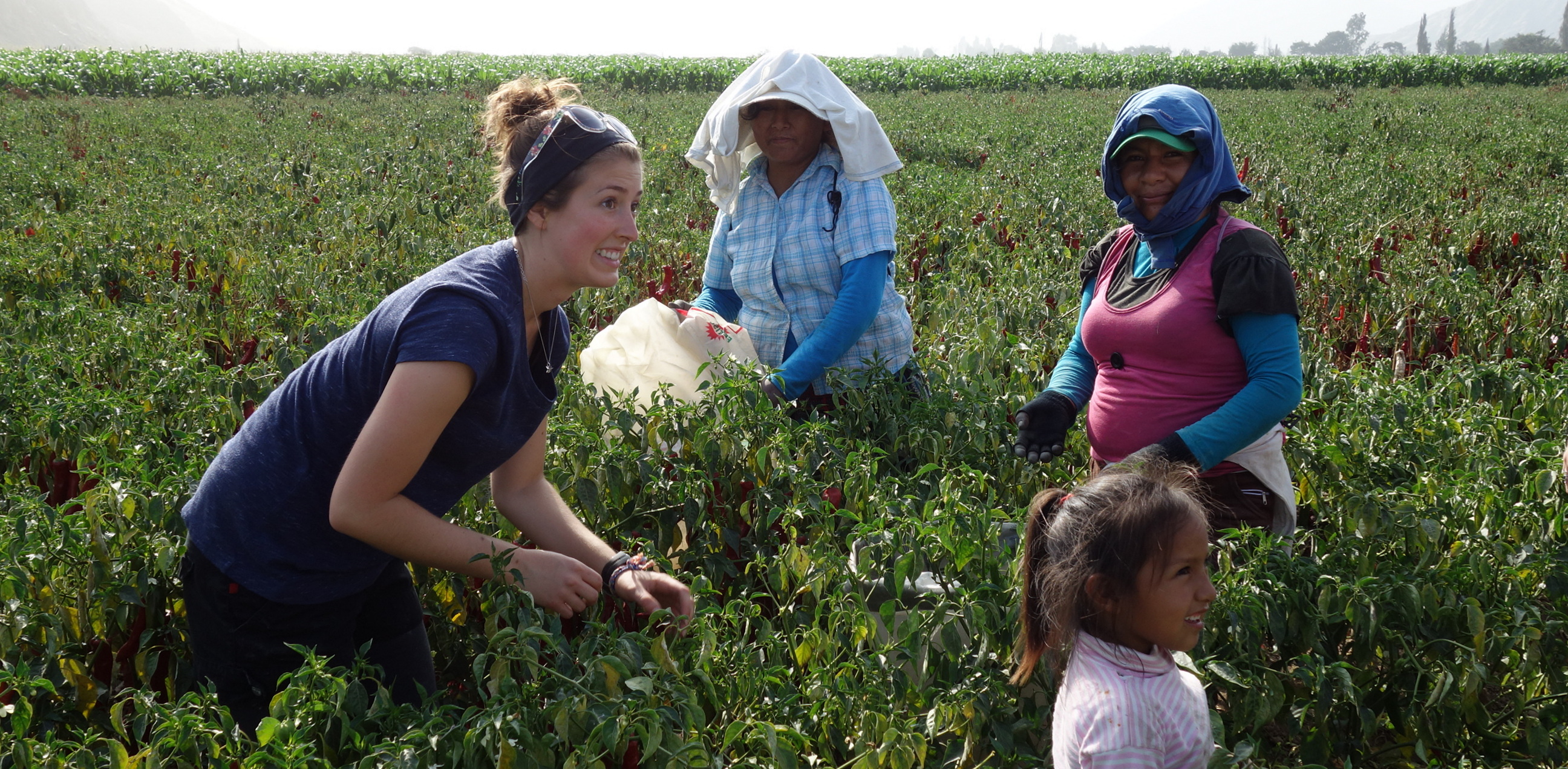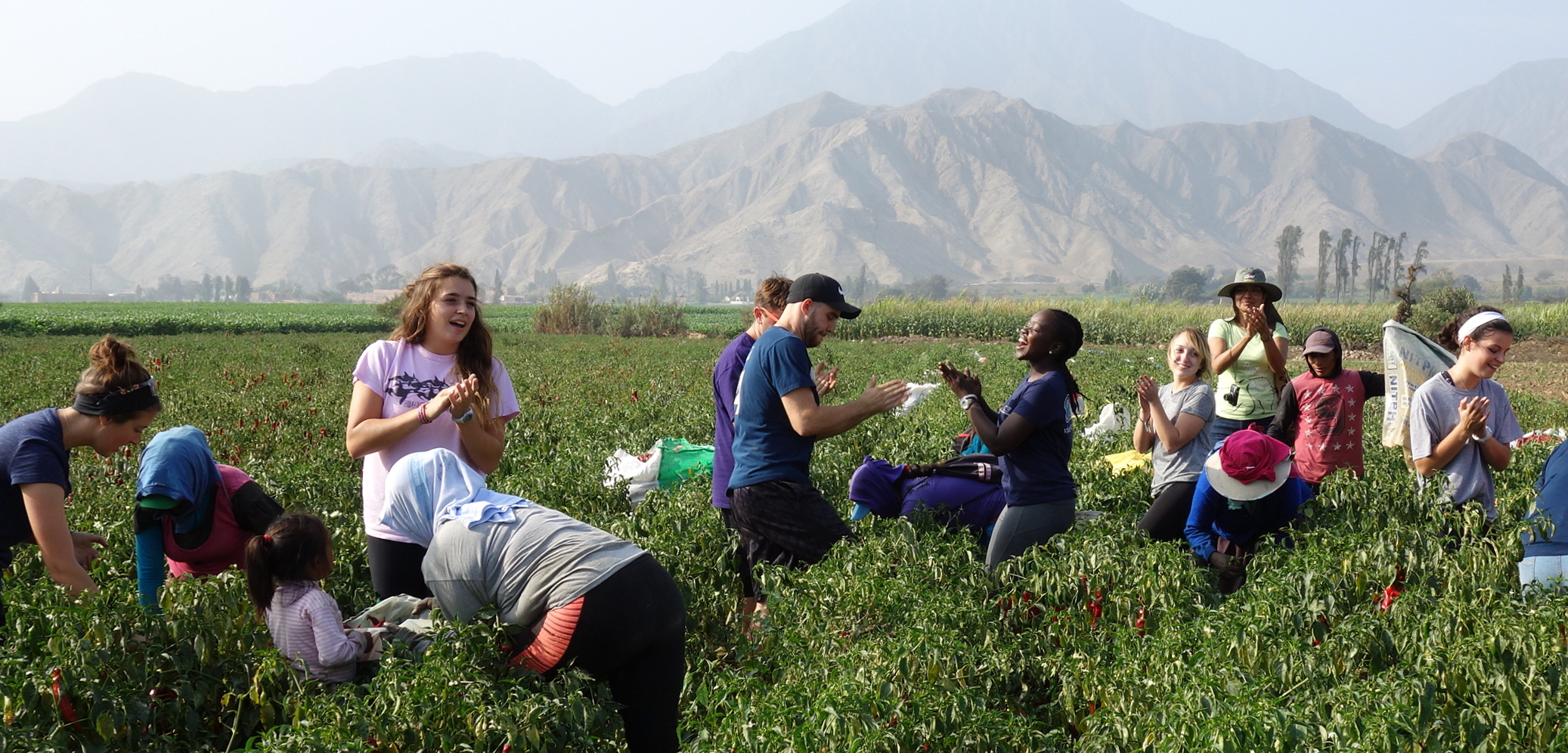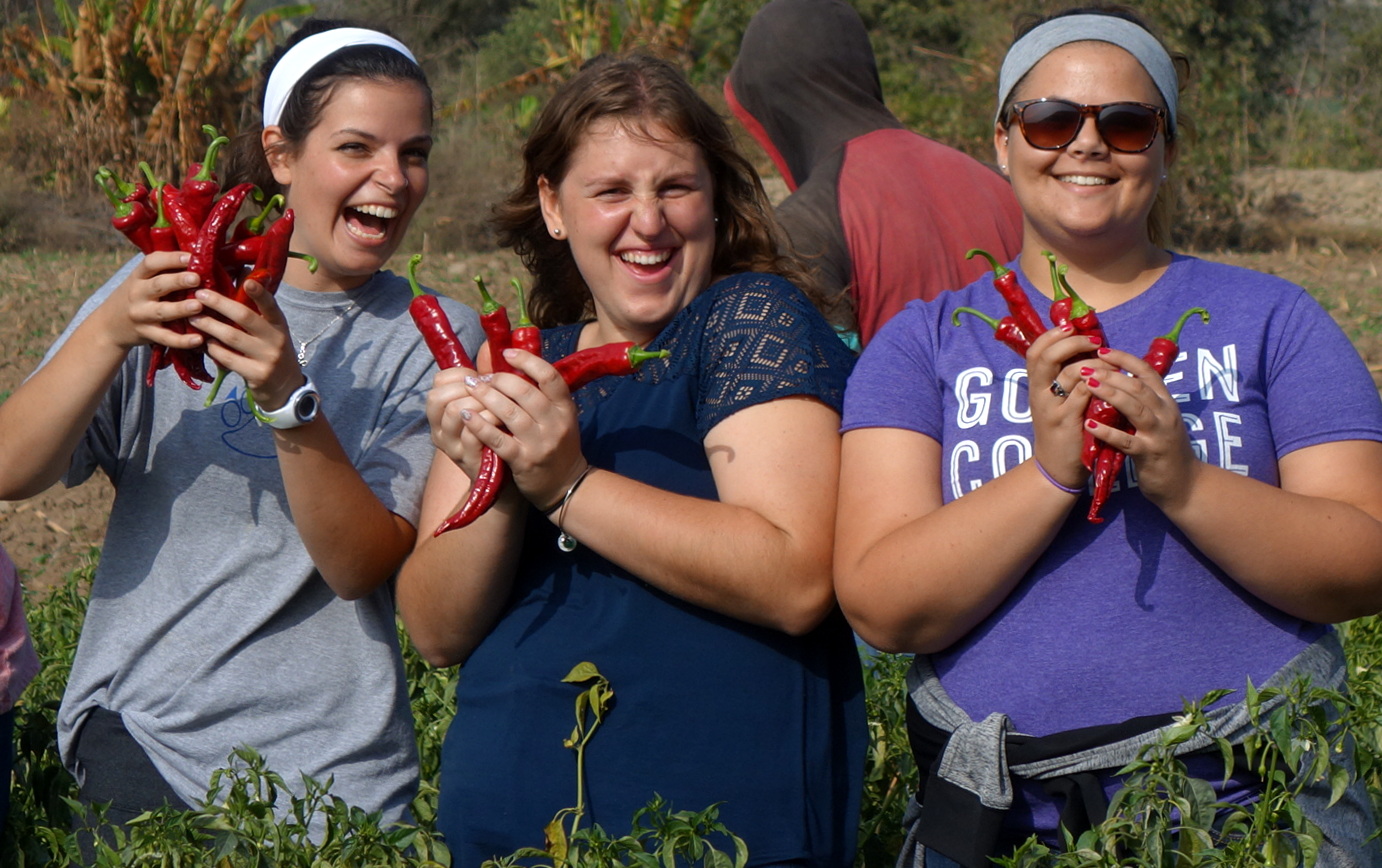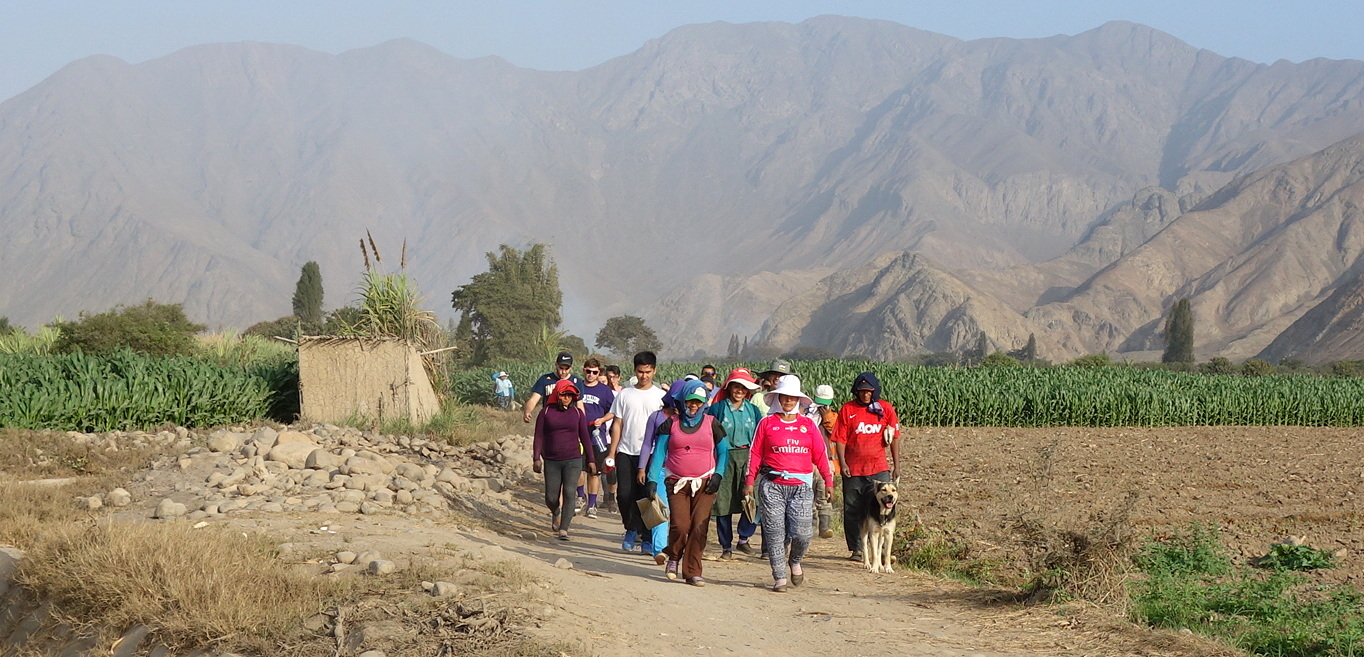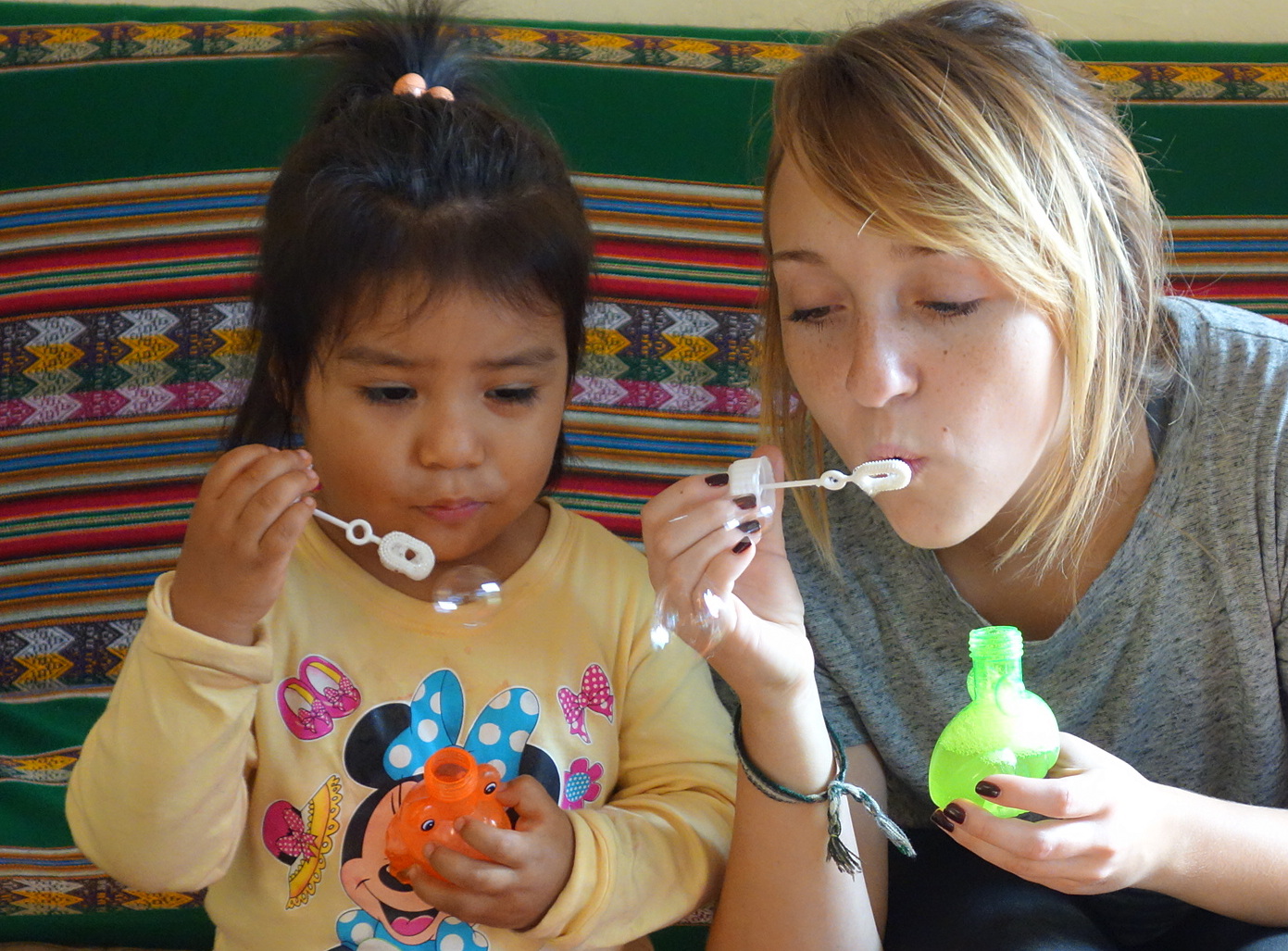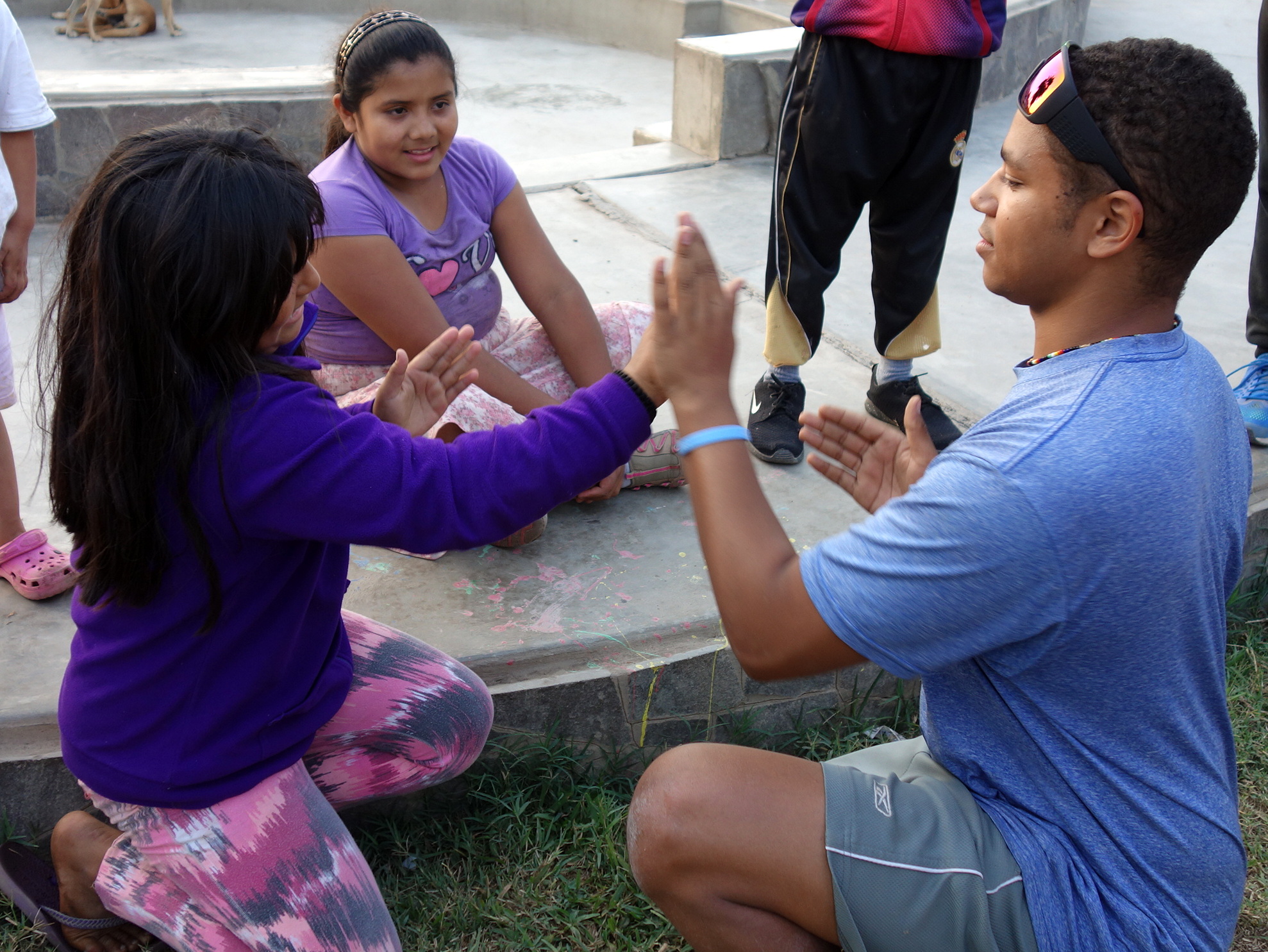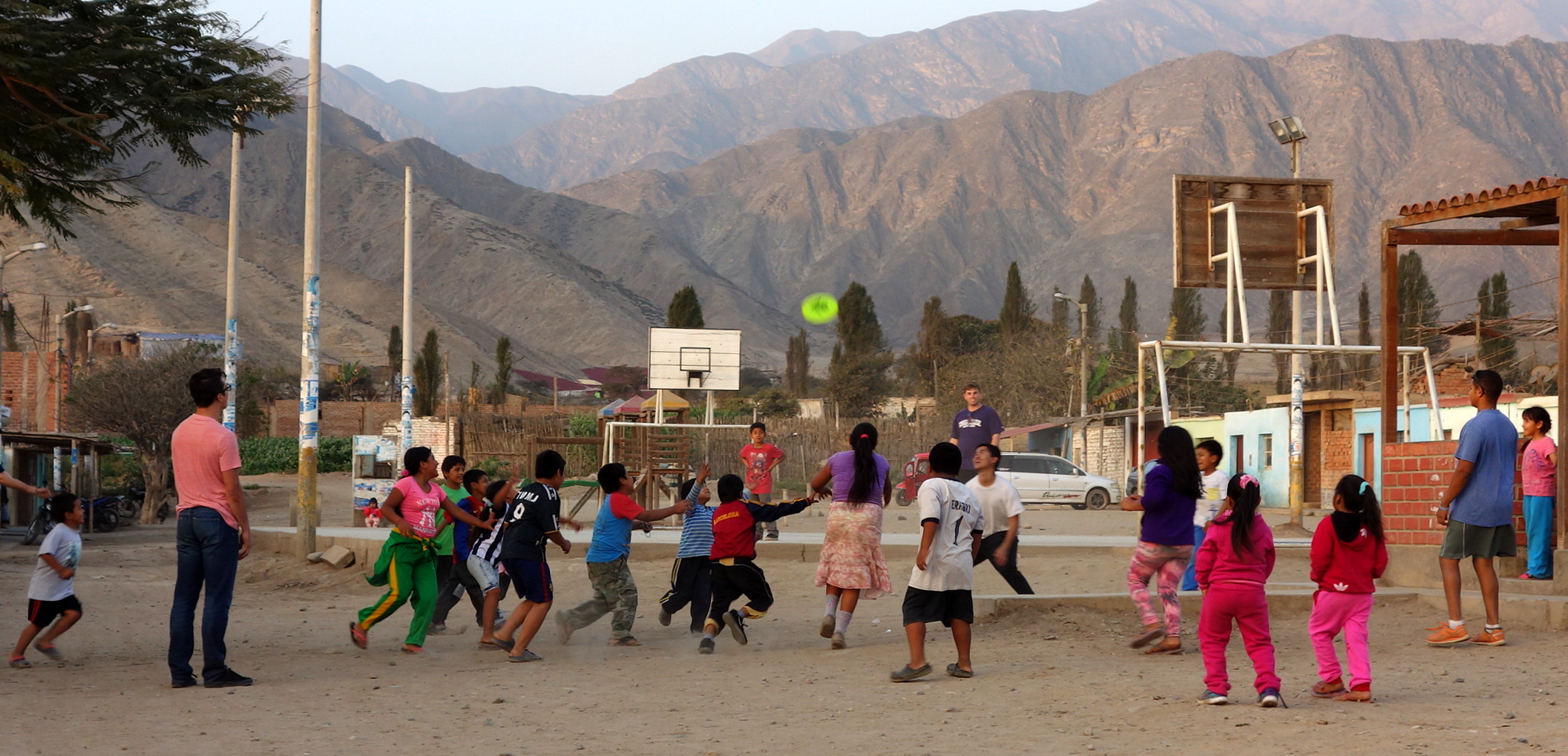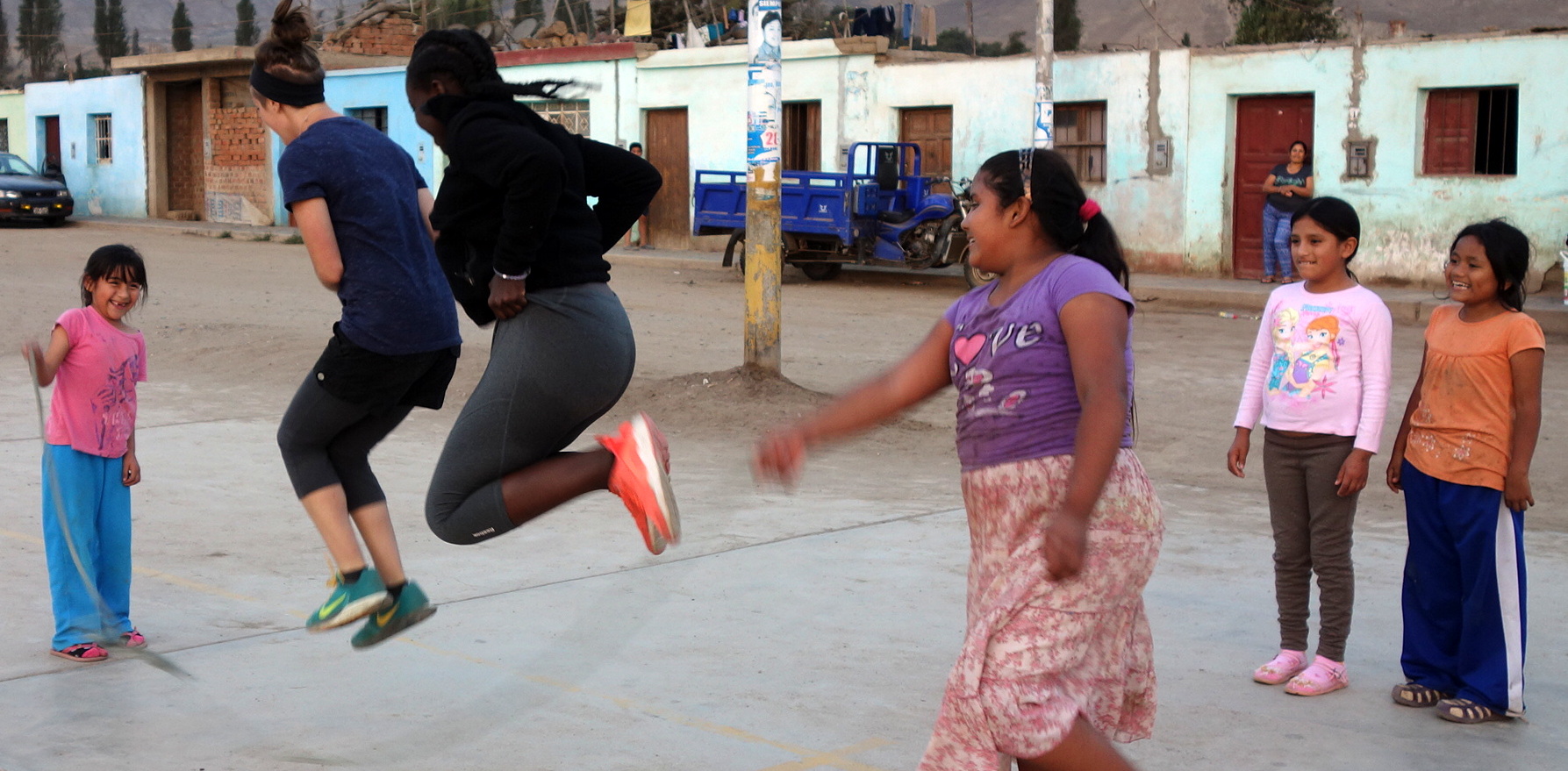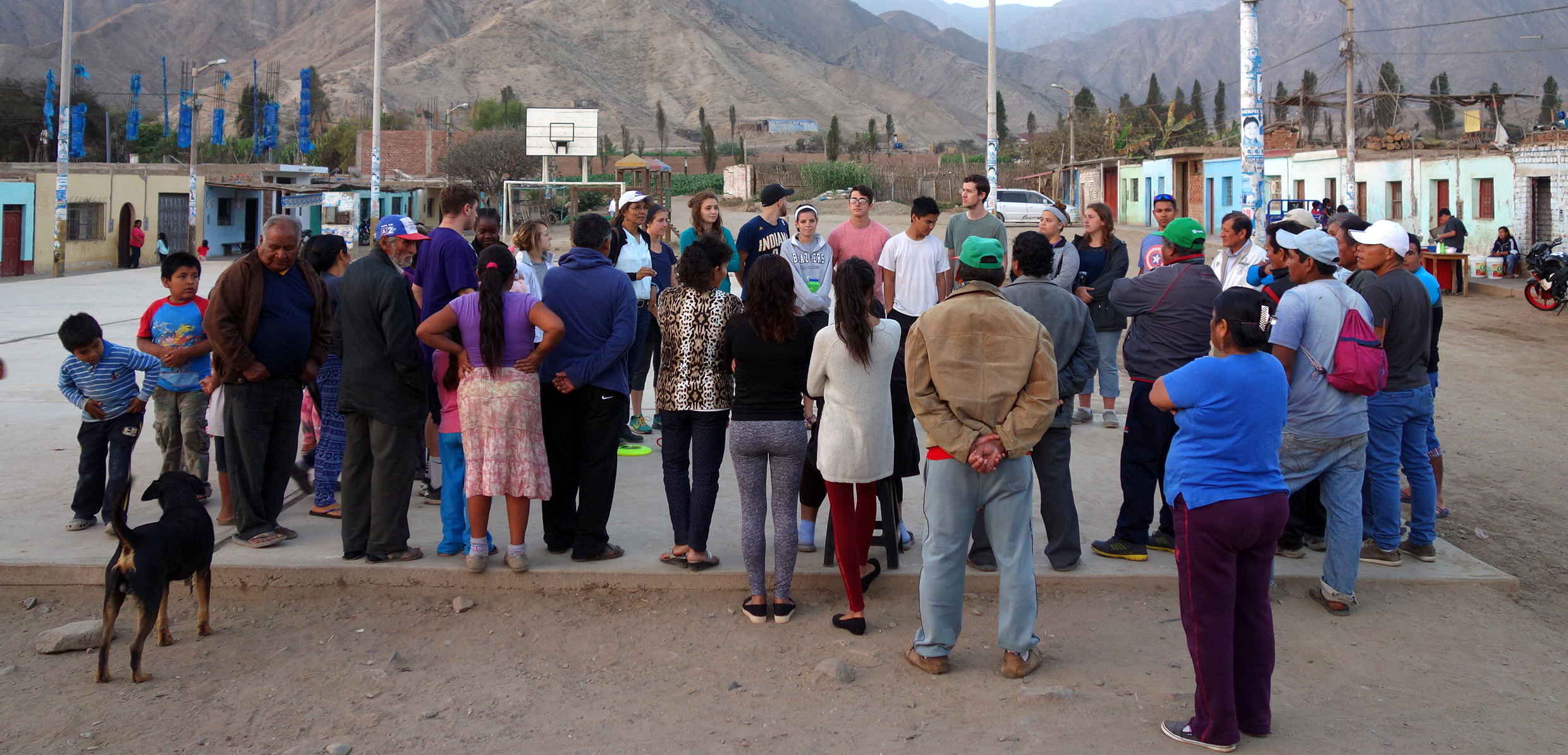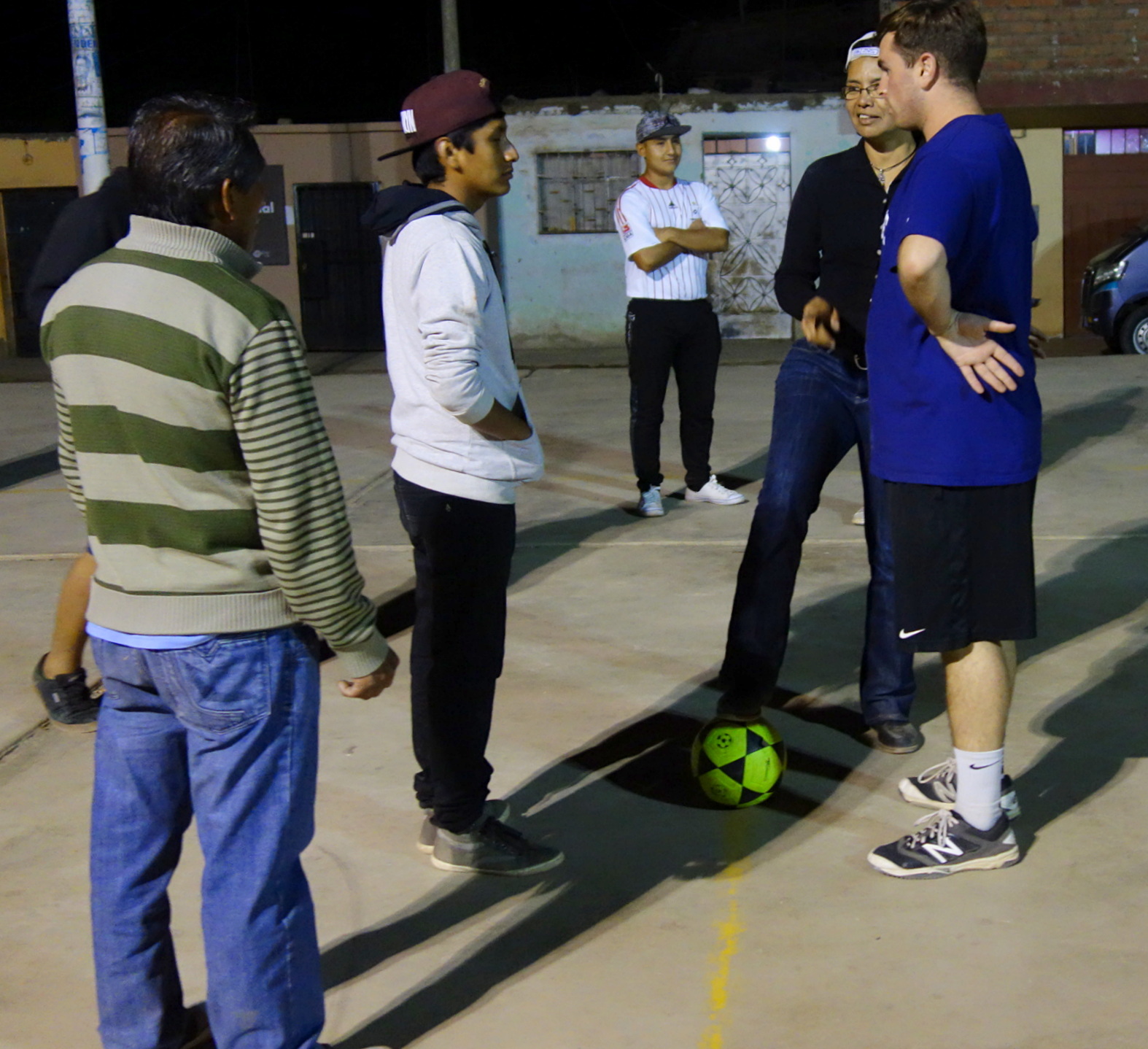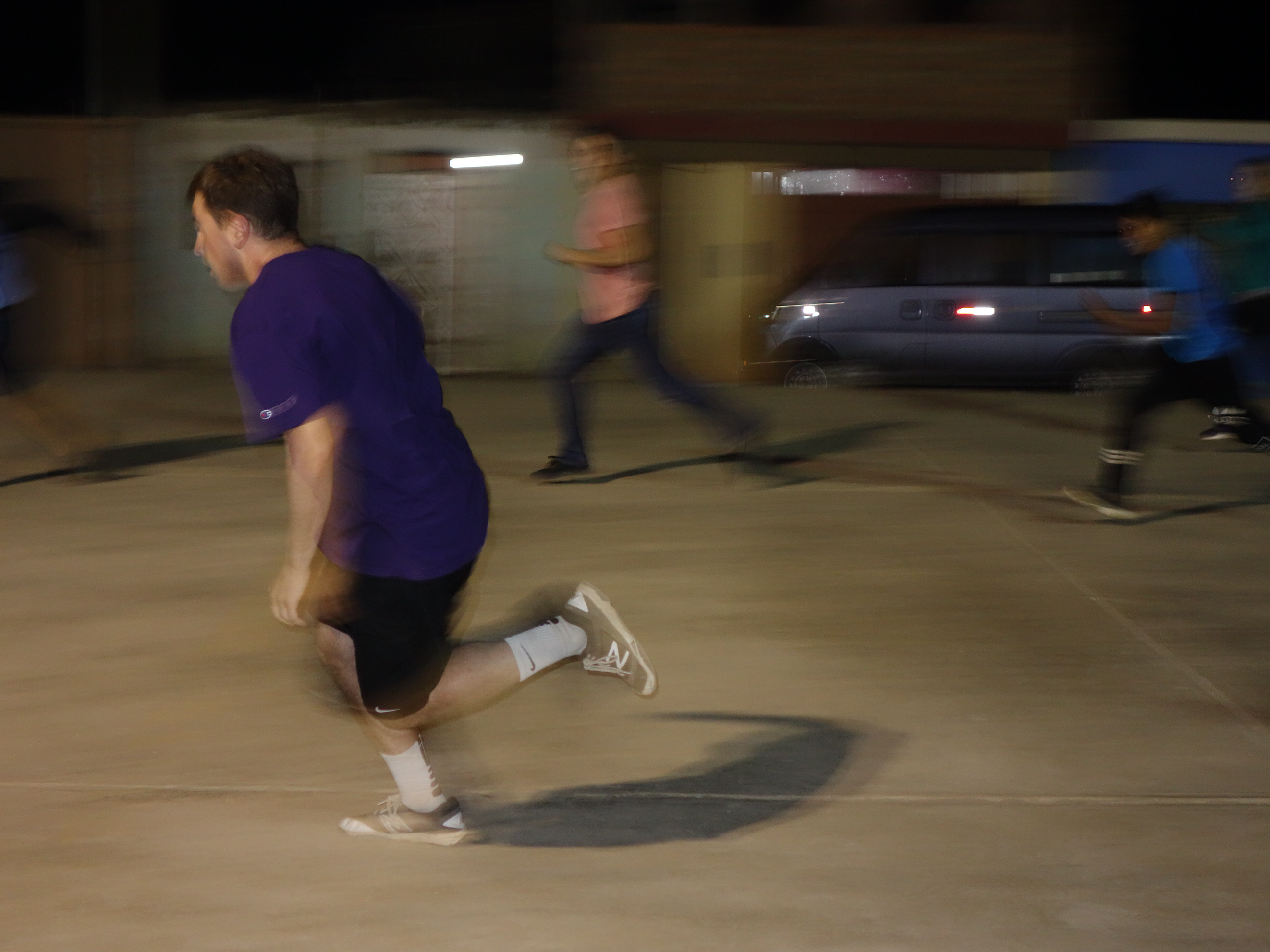Modern Caral near ancient Caral – Day 1
Thursday, Sept. 22
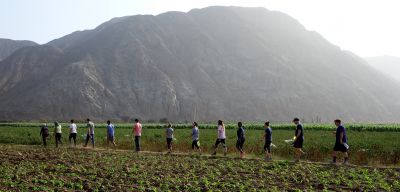
We took a two-day field trip to see the ruins of Caral, a city built north of modern Lima about 4,600 years ago. But before visiting ancient Caral, we spent a day in modern Caral, a typical rural village that gave its name to the ruins but hasn’t greatly benefited from the tourist traffic flowing each day to its famous namesake.
Modern Caral, the same as ancient Caral, does benefit from sitting alongside the Supe river flowing down from the high Andes and creating a belt of green on its way to the ocean. Around modern Caral, a quiet town of only a few hundred residents, are flat, irrigated fields boasting a variety of crops, including corn, passion fruit, and vegetables destined for export markets. That was the only lifeblood of the town before the discovery of the ruins in the recent past.
After a quick exploration around the town we met with its elected representative to hear the history and the struggles the residents have had to keep get land titles and electricity. After lunch Maria arranged for us to join in the fields some migrant workers from the Andes who come here to pick fruits and vegetables. We suspect that mostly, rather than helping them finish earlier, we may have slowed them down. To see if they would sing us a song in their native Quechua language, we offered to sing them a song. As we debated which one, someone suggested, “That hymn we sing at soccer games” (aka “606).
Back in town the students played with kids in the park until dusk, when several local residents came to meet with us and share their concerns and hopes for the town.
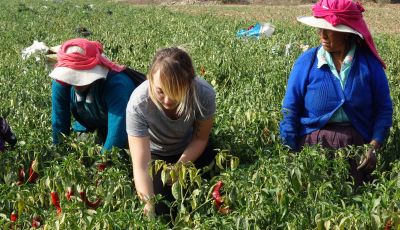
In her journal Riley noted that while picking the peppers benefited us in beginning to understand their lives better, the actual contribution may have been just slowing them down. [This] “is a small, loving community that needs help. It is a lack of available higher education and agricultural advancement, and it is an inability to capitalize off of the tourism brought in by the ruins. Then, and this is where the heartache comes in, you are left with a community fallen victim to a vicious circular cycle, and it is waiting for some kind of saving grace … I could feel the hope in their eyes and I couldn’t bare it, knowing that the next day I would leave …”
